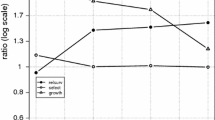Abstract
The statistical observation that small firms have created the majority of new jobs during the 1980s has had a tremendous influence on public policy. Governments have looked to the small firm sector for employment growth, and have promoted policies to augment this expansion. However, recent research in the U.S. suggests that net job creation in the manufacturing small firm sector may have been overestimated, relative to that in large firms.
The first part of this paper addresses various measurement issues raised in the recent research, reassess the issue of job creation by firm size, and pushes this work beyond the manufacturing sector by employing longitudinal data covering all companies in the Canadian economy. We conclude that over the 1978–92 period, as a group small firms did account for a disproportionate share of both gross job gains and losses, and net employment increases, no matter which method of sizing firms is used. Measurement does matter, however, as the magnitude of the difference in the growth rates between small and large firms is very sensitive to the measurement approaches used. Part one of the paper also produces results for various industrial sectors, and examines employment growth in existing small and large firms (i.e., excluding births). It is found that employment growth in the population of existing small and large firms is very similar. Attempts are made to introduce a job quality aspect to the analysis by using payroll rather than employment data. Payroll data allow any relative change in hours worked or wages paid in small (relative to large) companies to be incorporated in the findings. This did not significantly alter the conclusions reached using employment data only.
The second part of the paper looks at concentration and persistence of employment creation and destruction within size classes. If growth is highly concentrated, knowing that a firm is small will provide little information about its prospects for growth. Most small firms would grow relatively little, or decline, while a few expanded a lot. It is found that both job creation and destruction is highly concentrated among relatively few firms in all size groups. There are fast growing firms in all size classes, and although most job creation is found in the small firm sector, the fastest growing large firms out-perform the majority of small firms in any given period. Finally, the employment creation performance of businesses are compared over two three-year periods. It is found that knowing that a firm is a high performer (in terms of jobs created) over one period is of only limited value in determining growth in the second period. This is particularly true among small firms. These results suggest that firms which expand rapidly during one period are replaced to some considerable degree by others in the subsequent period.
Similar content being viewed by others
References
Baldwin, J., 1995, ‘Job Growth and Job Quality’, Paper prepared for the Ontario Ministry of Finance, Mimeo, Statistics Canada.
Baldwin, J., W. Chandler, C. Le and T. Papailiadis, 1994, ‘Strategies for Success, A Profile of Growing Small and Medium-Sized Enterprises in Canada’, Statistics Canada Publication No. 61–523, Ottawa.
Baldwin, J. and P. K. Gorecki, 1990, ‘Structural Change and the Adjustment Process: Perspectives on Firm Growth and Worker Turnover’, Economic Council of Canada, Statistics Canada, Ottawa.
Baldwin, J., R. Dupuy and W. Penner, 1993, ‘Development of Longitudinal Panel Data from Business Registers: Canadian Experience’, The Statistics Journal, UN Economic Commission, Autumn.
Baldwin, J. and G. Picot, 1995, ‘Employment Generation by Small Producers in the Canadian Manufacturing Sector’, Research Paper #70, Analytical Studies Branch, Statistics Canada, Ottawa.
Birch, David L., 1987, Job Creation in America: How our Smallest Companies Put the Most People to Work, New York: The Free Press.
Birch, David L., 1979, ‘The Job Creation Process’, Unpublished Report, MIT Program on Neighborhood and Regional Change.
Blanchflower, D. G. and S. M. Burgess, 1994, ‘Job Creation and Job Destruction in Britain, 1980–90’, Discussion Paper No. 912, Centre for Economic Policy Research.
Brown, C., J. Hamilton and J. Medoff, 1990, Employers Large and Small, Cambridge, Mass: Harvard University Press.
Davis, S. J., J. Haltiwanger and S. Schuh, 1993, ‘Small Business and Job Creation: Dissecting the Myth and Reassessing the Facts’, Unpublished Report, University of Chicago, University of Maryland, Federal Review Board.
Davis, S. J. and J. Haltiwanger, 1993, ‘Gross Job Creation, Gross Job Destruction and Employment Reallocation’, Working Paper No. 3728, Cambridge, Mass., National Bureau of Economic Research, June.
Davis, S., J. Haltiwanger and S. Schuh, ‘Gross Job Flows in U.S. Manufacturing’, U.S. Department of Commerce Bureau of the Census, Center for Economic Studies, Washington.
Heath, J., 1992, ‘Diversification Patterns of Canadian Industry, Implications of Classifying Canadian Businesses by their Leading Industry of Employment’, Statistics Canada, Ottawa.
Industry Canada, 1994, ‘Growing Small Businesses’, Communication Branch, Industry Canada, Ottawa.
Industry, Science and Technology Canada, 1991, ‘Small Business in Canada’, Minister of Supply and Services, Ottawa.
Leonard, J. S., 1986, ‘On the Size Distribution of Employment and Establishment’, Working Paper No. 1951, National Bureau of Economic Research.
Loveman, G. and W. Sengenberger, 1991, ‘The Re-emergere of Small Scale Production: An International Comparison’ Small Business Economics 3, 1–37.
Ministry of Industry, Trades and Technology, 1987, ‘The State of Small Business in Ontario’, Ontario Government, Toronto.
Morissette, R., 1993, ‘Canadian Jobs and Firm Size: Small Firms Pay Less?’, Canadian Journal of Economics 1 (February), XXVL.
OECD, 1985, ‘Employment in Small and Large Firms: Where have the Jobs come From?’, Employment Outlook, Paris.
Picot, G., 1992, ‘Workers on the Move: Permanent Layoffs; Perspectives on Labour and Income’, Autumn, Statistics Canada, Ottawa.
Picot, G., J. Baldwin and R. Dupuy, 1995, ‘Small Firms and Job Creation, A Reassessment’, The Canadian Economic Observer, January, Catalogue No. 11–010, Statistics Canada.
Revelli, R., 1994, ‘Statistics on Job Creation: Issues in the Use of Administrative Data’, Paper prepared for OECD meeting on Job Creation and Loss.
Statistics Canada, 1989, ‘Developing a Longitudinal Database on Businesses in the Canadian Economy, An Approach to the Study of Employment’, Publication No. 18–501, Ottawa.
Wannell, T., 1991, ‘Trends in the Distribution of Employment by Employee Size: Recent Canadian Evidence’, Research Paper No. 39, Analytical Studies Branch, Statistics Canada.
Author information
Authors and Affiliations
Rights and permissions
About this article
Cite this article
Picot, G., Dupuy, R. Job Creation by Company Size Class: The Magnitude, Concentration and Persistence of Job Gains and Losses in Canada. Small Business Economics 10, 117–139 (1998). https://doi.org/10.1023/A:1007981800219
Issue Date:
DOI: https://doi.org/10.1023/A:1007981800219




